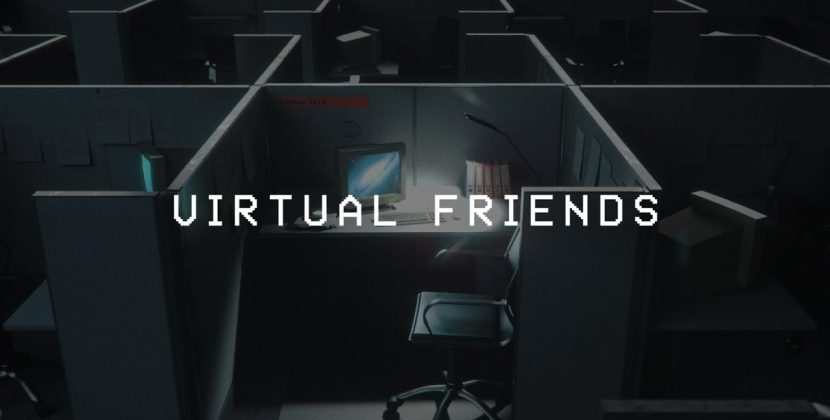
Are you considering starting a freelance career but don’t know where to begin? Well, look no further! One of the most important tools in your arsenal is an online portfolio. It’s like having a virtual resume that showcases your skills and experience to potential clients. In this blog post, we’ll discuss why having an online portfolio is crucial for getting hired as a freelancer, the different types of portfolios available, tips for building an effective one, and what to include in it. So let’s get started on your journey from zero to hired!
Why an Online Portfolio is Important
In today’s digital age, having an online portfolio is essential for any freelancer looking to get hired. Gone are the days of physically mailing your resume and work samples to potential clients. An online portfolio allows you to showcase your skills and experience in a professional and easily accessible manner.
Firstly, it gives you an edge over other candidates who may not have one. It shows that you take your profession seriously and are willing to go above and beyond to market yourself effectively. Secondly, it provides a platform for potential clients to view your work samples without having to request them separately – saving both parties time.
Furthermore, an online portfolio allows you more control over how you present yourself compared to a traditional resume or CV format. You can choose the layout, design elements, the order in which you present your work samples etc.
In sum, an online portfolio is important because it showcases your professionalism while providing easy access for potential clients. With so much competition out there in the freelance world,it’s important that every tool at our disposal be used effectively – including our virtual resumes!
The Different Types of Online Portfolios
When it comes to building an online portfolio, there are several types you can choose from depending on your needs and goals. The most popular ones include:
1. Traditional Portfolio:
This type of portfolio includes physical materials such as printed copies of your work samples, resumes, recommendations letters and other important documents that showcase your skills.
2. PDF/e-Portfolio:
A PDF or electronic portfolio is a digital version of the traditional one where all the materials are compiled into a single file for easy access and sharing.
3. Video Portfolio:
In this type of portfolio, video clips showcasing your skills and projects take center stage rather than written descriptions.
4. Social Media Portfolio:
Social media platforms like Instagram or Behance can serve as online portfolios for creatives looking to showcase their visual works in progress or finished products.
5. Website/Blog Portfolio:
This type offers more flexibility in terms of design and layout since you have complete control over how you present yourself to potential clients or employers.
It’s important to note that each type has its advantages and disadvantages; therefore researching which option suits you best will ensure you make an informed decision when creating an online presence that aligns with your career aspirations!
The Importance of a Well-Structured Online Portfolio
A well-structured online portfolio is essential for showcasing your skills and talents as a freelancer. It’s not just about having an impressive body of work; it’s also about presenting that work in a way that is easy to navigate, visually appealing, and compelling.
One of the main benefits of a well-structured online portfolio is that it allows clients to quickly assess whether you are a good fit for their project. If they can easily find examples of work that matches what they’re looking for, they are more likely to contact you.
Another important aspect of a well-structured online portfolio is organization. You want your work samples to be arranged in a logical order so that visitors can easily follow your progression as an artist or professional. Be sure to categorize your projects by type, such as graphic design, writing or photography.
Clear and concise descriptions accompanying each piece will give context on why this particular project was created and how it solved the client’s problem if applicable. This will help potential clients understand the value you bring while showcasing your style and expertise all at once!
Tips for Building an Effective Online Portfolio
Building an online portfolio can be a daunting task, but with these tips, you can create an effective one that showcases your skills and talents.
Firstly, it’s essential to keep your portfolio simple and easy to navigate. Use a clean and consistent layout throughout the website to make sure potential clients aren’t distracted by unnecessary elements.
Secondly, choose your best work carefully. Your portfolio should showcase only the projects that highlight your skills in the best way possible. Don’t include every project you’ve ever worked on; instead, select those which demonstrate versatility and creativity.
Thirdly, make sure you’re telling a story through your portfolio. Clients want to see how you approach problems creatively and what experiences led you there. Adding context or explaining why a particular piece was created will help clients understand what makes you unique.
Fourthly, don’t forget about branding! It’s important to brand yourself consistently across all platforms such as business cards or email signatures so people recognize who they are dealing with when they come across any of your online profiles.
Finally (but certainly not least), always ask for feedback from peers or other professionals in the industry before publishing it live for everyone else’s eyes. Incorporating constructive criticism is vital towards making an effective online presence with long-term benefits in mind
How to Format Your Online Portfolio
Formatting your online portfolio is crucial in making it look professional and polished. While there are many different ways to format your portfolio, one important thing to keep in mind is that it should be easy to navigate for potential clients.
Start by choosing a clean and simple design that highlights your work instead of distracting from it. Avoid using too many colors or fonts, as this can make the portfolio appear cluttered and unprofessional.
It’s also important to organize your work in a logical way, such as by category or date. This will make it easier for clients to find what they’re looking for and get a sense of your skills and experience.
Don’t forget about the details – make sure all images are high-quality and properly sized, links are working correctly, and any text is free from spelling or grammatical errors. A well-formatted online portfolio can help you stand out among other freelancers and land more clients.
What to Include in Your Online Portfolio
In summary, having an online portfolio is crucial for starting your freelance career. It’s a way to showcase your skills and work experience to potential clients, and it can increase your chances of getting hired.
When building an effective online portfolio, keep in mind the different types available (such as website portfolios or social media profiles), the importance of structure and formatting, and the key elements that should be included (like a bio/about section, samples of previous work, and client testimonials).
By taking these tips into consideration and putting effort into creating a standout online portfolio, you’ll be on your way from zero to hired in no time!










